
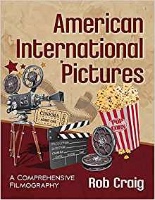 To cut right to the chase, as many skinflint movies of the studio in question did, any AIP fan is going to want to own Rob Craig’s American International Pictures: A Comprehensive Filmography, and their desire will not go unrewarded. Ignore the off-putting cover, because the hefty McFarland & Company paperback delivers the proverbial groceries, thereby earning that penultimate word of its subtitle.
To cut right to the chase, as many skinflint movies of the studio in question did, any AIP fan is going to want to own Rob Craig’s American International Pictures: A Comprehensive Filmography, and their desire will not go unrewarded. Ignore the off-putting cover, because the hefty McFarland & Company paperback delivers the proverbial groceries, thereby earning that penultimate word of its subtitle.
In nearly 450 pages, more than 800 projects are discussed, whether AIP made the movie from scratch or merely picked it up for quick-buck distribution. Although the studio was known for biker, beach party, sword-and-sandal and Poe pictures, it also dealt in European spy thrillers and Mexican kiddie matinees, in kaiju and mondo, in Larry Buchanan and Larry Cohen, and even S-E-X, from Dagmar’s Hot Pants to Deadly Weapons.
I’ve been mixed on Gutter Auteur author Craig’s previous books on B movies, but with this behemoth, he’s done the Lord’s work. All but a scant few of the titles are reviewed in full, which is quite an undertaking when you think about it (and I do). While reading a paragraph that goes on for more than half a page can start to play tricks on your mind, at least his write-ups don’t waste time with rehashing the entire story; plot synopses are limited to a line or two, straight from the AIP pressbooks.
For every name familiar to film fans (Roger Corman, Jess Franco, K. Gordon Murray, Doris Wishman, etc.) are several who never got close to such status. The mark of this kind of movie guide is whether you’re exposed to titles you haven’t heard of, and that’s where Craig’s book pays off big, putting me on the hunt for Bring Me the Vampire, Slave Girls of Sheba, The Hong Kong Cat, The Wife Swappers and so many, many more.
In mining so deep, Craig occasionally shares an opinion so contrarian and aggressively, as if there were no room for debate, it seems calculated. For example, the Joan Collins vehicle The Devil Within Her is “far superior” to “the pompous, humorless Rosemary’s Baby,” while Dario Argento’s Suspiria is summarily dismissed outright as “that artfilm bore.” Of Ivan Reitman’s Cannibal Girls, he writes, “Hard to believe this was produced and directed by the same guy who bored us to tears a decade later with Ghostbusters.”
A book this colossal is bound to have a few errors, with perhaps the most egregious being three spellings of The Ghost in the Invisible Bikini starlet Deborah Walley (Wally, Whalley). Ditto a few miscalculations; Hallucination Generation’s Daniel Steinmann is noted for having moved from acting “to direct a very few obscure features,” which makes one wonder in which world is Paramount Pictures’ hit sequel Friday the 13th: A New Beginning considered obscure?
On the mitigating side, Craig does offer the most apt description of Al Adamson’s work I’ve run across yet (“the viewer is advised not to attempt to understand, but to experience”), as well as a standalone chapter on AIP’s ventures into television programming, which is so oddly fascinating, I gladly would have accepted a book on that, too. —Rod Lott

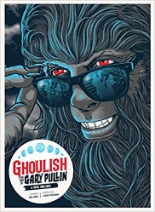
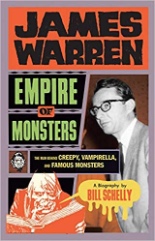
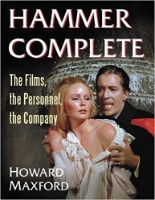


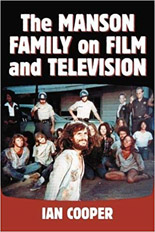
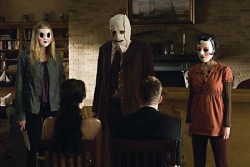 However, what makes the McFarland & Company paperback worth the price to cinephiles is the exhaustive coverage of the exploitation industry’s various entries into the thematically related sweepstakes (although, it should be noted, the book is not exploitative). The net spreads wider than one might think, from well-known cult classics like David E. Durston’s
However, what makes the McFarland & Company paperback worth the price to cinephiles is the exhaustive coverage of the exploitation industry’s various entries into the thematically related sweepstakes (although, it should be noted, the book is not exploitative). The net spreads wider than one might think, from well-known cult classics like David E. Durston’s